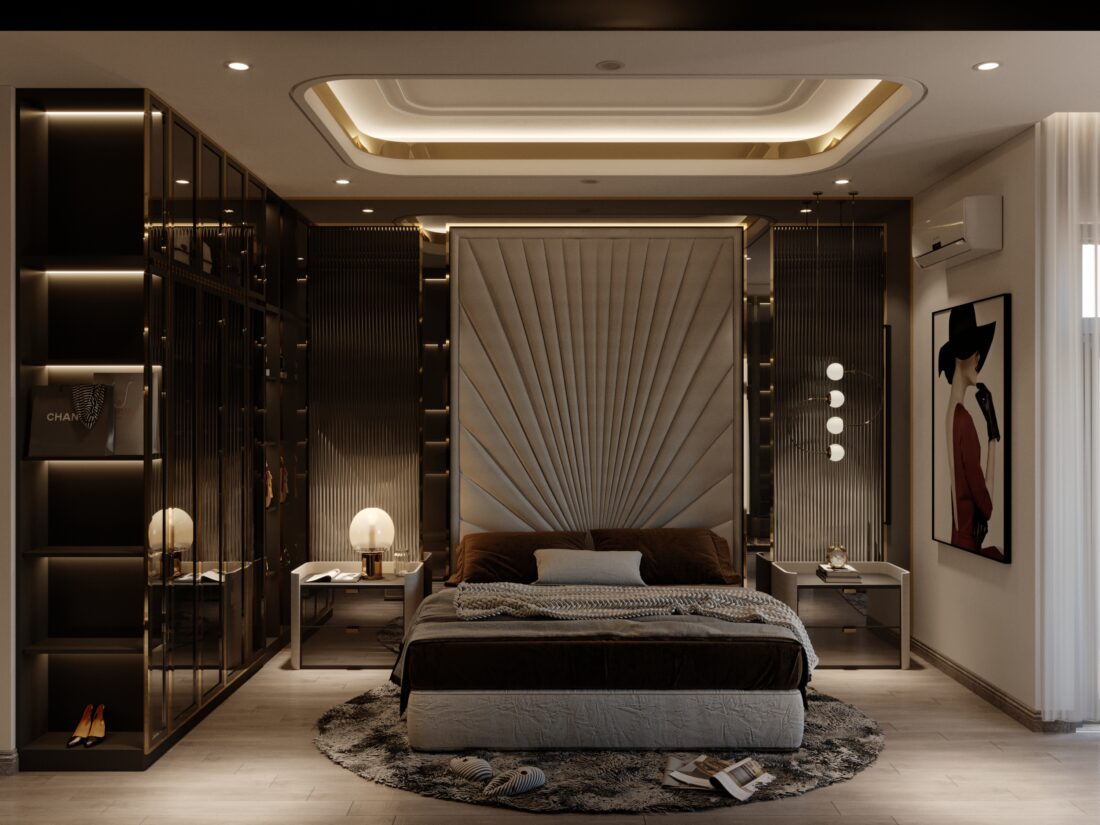## Unveiling Bedroom 552: A Deep Dive into Phuc La's 3D Interior Scene
This detailed exploration delves into the intricacies of _Bedroom 552_, a captivating _3D interior scene_ meticulously crafted by artist Phuc La using _3ds Max_. We'll examine the model's strengths, its potential applications, and the technical aspects that contribute to its overall impact. The analysis will be broken down into several key sections, offering a comprehensive understanding of this impressive digital creation.
Part 1: First Impressions and Artistic Merit
The first encounter with Bedroom 552 is immediately striking. Phuc La’s skill is evident in the careful rendering of light and shadow, creating a realistic and inviting atmosphere. The overall aesthetic is one of _modern elegance_, blending clean lines with warm textures. The _3ds Max_ modeling capabilities are fully exploited, resulting in detailed textures, realistic materials, and a sense of depth that draws the viewer in. The _bedroom_ setting itself is thoughtfully composed, showcasing a careful balance of space and functionality. The scene isn't merely a collection of furniture; it feels lived-in, hinting at a personality and lifestyle. This is a crucial aspect of successful _3D interior design_, transcending mere technical proficiency to achieve emotional resonance. The *color palette* is expertly chosen, with subtle variations creating visual interest without overwhelming the senses. The interplay between light and dark tones contributes to the overall mood, suggesting a space both relaxing and sophisticated. This mastery of *lighting* and *color* is a hallmark of experienced 3D artists.
Part 2: Technical Specifications and Model Breakdown
Bedroom 552 is presented as a _3ds Max_ file, a format widely used in the professional _3D modeling_ and _animation_ industry. This compatibility ensures broad accessibility for various applications. The file likely contains meticulously modeled furniture, including a bed, nightstands, a dresser, and potentially other elements depending on the scene's complexity. The level of detail in these *models* is crucial. Each piece of furniture should be accurately represented, with textures reflecting the material properties realistically (e.g., the smooth sheen of a lacquered surface, the rough texture of woven fabric). Furthermore, the *polycount* (number of polygons used in the model) is an important technical consideration. A higher polycount results in greater detail and realism but also increases file size and rendering time. Phuc La's skill likely lies in optimizing the polycount to achieve a visually satisfying result without compromising performance. The scene's *materials* are likely carefully crafted to simulate the appearance of real-world materials, employing techniques such as *bump mapping*, *normal mapping*, and potentially *displacement mapping* for added realism. These techniques provide depth and surface detail without dramatically increasing the polygon count. The *lighting setup* is another crucial element. The artist likely used a combination of *ambient lighting*, *directional lighting*, and potentially *area lights* to create a natural and believable illumination.
Part 3: Applications and Potential Uses
The versatility of Bedroom 552 makes it a valuable asset for various professional and personal applications. Its primary use case is likely as a _3D interior design visualization_. Architects, interior designers, and real estate agents can utilize this model to showcase designs to clients, providing a realistic preview of the finished product. This drastically reduces the need for costly physical mockups and allows for easy experimentation with different furniture arrangements, color schemes, and lighting options. The model also has potential for use in *virtual reality (VR)* and *augmented reality (AR)* applications. Imagine clients being able to “walk through” the bedroom virtually, experiencing the space in a truly immersive way. Beyond professional uses, Bedroom 552 could be utilized for *architectural rendering*, *game development*, or even as a base for *digital art* projects. The detailed model could be adapted and modified for a multitude of scenarios. Its quality lends itself to being incorporated into larger, more complex projects.
Part 4: Strengths and Areas for Potential Improvement
While Bedroom 552 demonstrates high-quality 3D modeling, a critical evaluation can highlight both its strengths and potential areas for improvement. The strengths lie primarily in the realistic rendering, the detailed modeling, and the thoughtful composition. The *atmosphere* created within the scene is convincingly inviting, enhancing its practical value as a design visualization tool. However, there are always possibilities for enhancements. Further refinement of certain *textures*, particularly fabrics, could elevate the realism further. Subtle imperfections and wear-and-tear could add a more lived-in feel. The *lighting* setup, while impressive, could potentially benefit from additional subtle adjustments to create even more nuanced shadows and highlights. Finally, the inclusion of more detailed *props* (books, personal items, etc.) could enrich the scene and contribute to a stronger narrative, making the space feel more personalized.
Part 5: Conclusion: A Valuable Asset in the 3D Modeling World
Phuc La’s Bedroom 552 represents a significant contribution to the world of 3D interior design. The model showcases a high level of technical skill and artistic vision, resulting in a realistic and visually appealing scene. The attention to detail and the effective use of 3ds Max's capabilities are clearly evident. The scene's versatility makes it a valuable tool for professionals and enthusiasts alike. Its applications extend beyond simple visualization, opening up possibilities for VR/AR experiences, architectural rendering, game development, and more. While minor refinements could further enhance the model, its current state demonstrates a strong mastery of 3D modeling techniques and a clear understanding of creating compelling and effective interior scenes. The availability of such high-quality 3D models like Bedroom 552 is crucial for advancing the fields of interior design and digital art, offering powerful tools for creativity and innovation. It serves as a testament to the growing capabilities of 3D modeling software and the artistic talent driving its application.






































